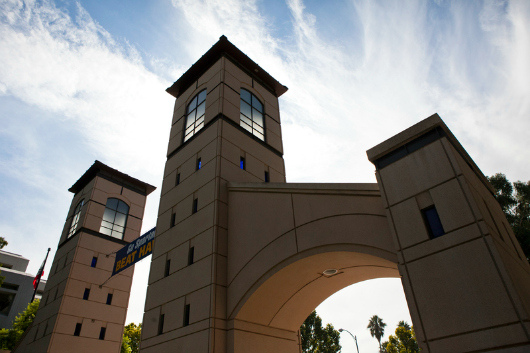
Climate change hit home in 2014, when California shattered hot weather records, according to the Department of Meteorology and Climate Science (David Schmitz photo).
California shattered its all-time annual temperature record in 2014 with record highs throughout the state. Data from San Jose State University’s Department of Meteorology and Climate Science shows the annual average temperature in the state spiked unexpectedly in 2014.
The average temperature in the Golden State in 2014 was 63 degrees Fahrenheit. That is 4 degrees above normal and more than 2 degrees hotter than the previous high set during the Dust Bowl era – 1934.
While many of us were worrying about the drought, we were quietly crushing previous temperature records for our state,” said Alison Bridger, chair of the Department of Meteorology and Climate Science.
Professor Bridger attributes the record heat to climate change, driven by increasing amounts of greenhouse gases. Last week, both NOAA and NASA announced that 2014 was the warmest year on record when averaged for the entire globe.
“The record California heat brings the reality of climate change closer to home for all of us in the state,” she said.
El Nino, Drought
Data from the state has long shown steady warming, but 2014 was exceptional. Eugene Cordero, professor, Department of Meteorology and Climate Science, says the rising temperature can impact the state in many ways:
“Warmer temperatures directly affect our agriculture, not to mention precious water resources,” Professor Cordero said.
Both Bridger and Cordero emphasized that the global warmth of 2014 is particularly remarkable since it was a non-El Nino year. Oceans store heat, which is pumped into the atmosphere during an El Nino event. When the next big El Nino develops, scientists around the world expect the atmosphere to heat up even more.
The data comes from the Congressional Temperature Trends report compiled by Professor Cordero, University of Maryland Associate Research Scientist, Clark Weaver and colleagues. The report uses annual temperature records from NOAA’s National Climate Data Center.
